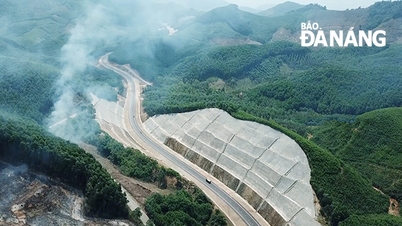
El Nino appears and will continue in the second half of this year
The World Meteorological Organization (WMO) has just forecast that the El Nino phenomenon will continue to occur in the second half of 2023 with a probability of 90% and will be of moderate intensity. The information is provided by combining forecasts and guidance from experts around the world.
According to Professor Petteri Taalas, Secretary-General of the WMO, the emergence of El Nino will significantly increase the possibility of breaking temperature records and causing more extreme temperatures in many parts of the world and in the ocean.
“The WMO El Niño declaration is a signal to governments around the world to mobilize preparedness measures to limit the impacts on our health, ecosystems and economies . Early warning and early action in anticipation of extreme weather events related to this climate phenomenon are crucial to safeguarding human lives and livelihoods,” he said.
El Nino occurs on average every 2-7 years and episodes typically last 9-12 months. It is a naturally occurring climate pattern involving warming of ocean surface temperatures in the central and eastern equatorial Pacific Ocean. However, it is occurring in the context of climate change due to human activities.
Forecasting the El Nino phenomenon, a previous report in May by the WMO said there was a 98% chance that at least one of the next five years and the five-year period as a whole would be the warmest on record, surpassing the record of 2016 when there was a very strong El Nino phenomenon.
The UK Met Office and partners around the world predict a 66% chance that the average global surface temperature will temporarily exceed 1.5°C above current levels between 2023 and 2027. This is a wake-up call and an early warning that we are not on track to limit global warming to significantly reduce the impacts of climate change.
Obvious impact
According to the WMO's State of the Global Climate report, 2016 was the hottest year on record due to a "twin event" of a strong El Nino and human-caused warming from greenhouse gases. The impact on global temperatures typically occurs the year after an El Nino develops, so the effects of this year's El Nino could be felt well into 2024.
The average global temperature in 2022 is about 1.15°C higher than the 1850-1900 average due to the La Nina phenomenon.
El Nino is often associated with increased rainfall in southern parts of South America, the southern United States, the Horn of Africa, and Central Asia. El Nino has also caused severe drought in Australia, Indonesia, parts of South Asia, Central America, and northern South America.
Since February, the monthly mean sea surface temperature anomaly in the central-eastern equatorial Pacific has warmed significantly, increasing from nearly half a degree Celsius below average (-0.44 degrees Celsius in February) to about half a degree Celsius above average (0.47 degrees Celsius in May). During the week centered on June 14, the warm sea surface temperature anomaly continued to increase, reaching a value of 0.9 degrees Celsius.
There is strong evidence from both ocean and atmospheric observations that El Niño conditions are present in the Pacific. However, some uncertainty remains due to the weak ocean-atmosphere coupling that is critical for the amplification and maintenance of El Niño. It is anticipated that it will take approximately another month for the coupling to fully establish in the tropical Pacific.
El Niño and La Niña are major – but not the only – drivers of the Earth’s climate system. In addition to the long-established ENSO Update, the WMO now also regularly publishes the Global Seasonal Climate Update (GSCU), which incorporates the influence of other major climate drivers such as the North Atlantic Oscillation, the Arctic Oscillation and the Indian Ocean Dipole.
Source






































































































Comment (0)